Press-fit solutions address future automotive reliability requirements
Wan Zhang
Technical Marketing Manager, Interconnect Technologies Responsible for global electronic finishing markets.
September 06, 2017
It is no secret that automotive manufacturers are packing ever-more computing power into their vehicles. The printed circuit boards (PCBs) in cars control functions throughout the vehicle, both in the cabin and under the hood. Automotive PCBs contain millions of through holes, and each of these connections needs to meet demanding reliability standards. The automotive industry is rapidly migrating toward solderless press-fit interconnection solutions as an alternative to soldering.
Press-fit solutions exclusively use mechanically compliant pins that deform elastically during insertion, to minimize stresses on the PCB. The press-fit connections rely on cold welding between press-fit contact pins and the PCB to form a reliable connection with enhanced electrical performance (see Figure 1). These solderless connections eliminate an elevated temperature processing step, simplify the manufacturing process flow, and allow more compact designs of electrical units. Press-fit connectors create gas-tight contacts that are resistant to harsh environments, shock, and vibration.
As smartphones continue to evolve into ever-more-powerful portable computers, energy demands tend to drain battery life at a rate that can be frustrating for consumers. Consumers expect to be able to use their phones for an entire day without having to recharge the battery. Manufacturers are responding by increasing battery capacity, and therefore battery size, but they face a challenge in doing so without increasing the thickness of the phones. One solution involves incorporating flexible printed circuit boards (FPCBs) that can tolerate bending around tight radii of curvature to fit everything into a constricted footprint.
FPCBs place different processing restrictions upon designers than do rigid boards. Thick copper layers in the form of mechanically rolled copper foils are standard in FPCBs, since they can withstand bending stresses far better than the electrodeposited copper used for rigid PCBs. But the surface of copper foils differs from that of electrodeposited copper, so it can be difficult to achieve a smooth/bright surface after a conventional electrodeposited copper plating process.
Rigid boards are, by definition, processed in sheet form, whereas the ability to deposit metal layers using a roll-to-roll (R-to-R) process is appealing for multilayer FPCBs. Copper pattern and panel plating that is compatible with R-to-R manufacturing equipment and that creates highly reliable traces and vias at low cost poses a solution to the challenges that designers and process development engineers are facing.
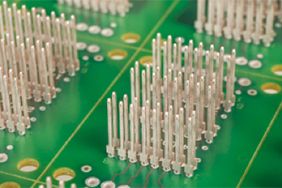
Figure 1: Press-fit connector pins inserted into a PCB. Photo courtesy of TE Connectivity.
The contact finishing market for automotive press-fit connectors is currently mixed between tin-lead and pure-tin finishes. The tin-lead-coated compliant pins remain exempt from RoHS restrictions prohibiting the use of lead in electronics as of June 2017, but this exemption is under regular review, and manufacturers may soon be forced to remove tin-lead completely to comply with RoHS regulations.
Regulation-compliant pure-tin contact finishes are prone to tin whisker growth under typical automotive press-fit conditions. With the trend toward finer pitch and smaller pins comes less tolerance for tin whiskers, since smaller whiskers can cause electrical shorts between adjacent connectors. Some applications, such as telecommunications, may be able to use press-fit connectors with pure tin reliably. Contact pressure on press-fit connections in automotive applications, however, can be 100 times higher than that in telecom applications. This tight fit is necessary to minimize reliability issues due to vibration of vehicles, but the high contact force increases the risk of long whiskers.
Leading automotive electronics manufacturers want a reliable, RoHS-compliant solution. Their priorities are that finishes be lead-free, not susceptible to tin whiskers, and that they have comparable or better performance to press-fit connectors made using standard finishes.
Dow Electronic Solutions has developed two viable options for lead-free coatings on compliant pins. Both surface finishes are compatible with all standard lead-free PCB finishes, including immersion tin, immersion silver, or OSP. Each option comes with its own set of advantages and considerations.
Silveron™ GT-820 Silver-Tin
The first option is Dow’s Silveron GT-820, an electrolyte that produces a silver-rich silver-tin alloy with an 80/20 composition close to that of the intermetallic compounds Ag3Sn and Ag4Sn. The deposit contains no pure tin, which makes tin-whisker growth nearly impossible. Despite a high silver content in the deposit, a thin AgSn layer (0.5-1.0µm), versus commonly applied final finishes on PCBs, shows a coefficient of friction equal to that of industrial standard matte tin, resulting in a desired low insertion force. Retention forces similar to that achieved using tin-lead finishing were observed with the new AgSn finish.
The electroplating of the AgSn alloy can be done by reel-to-reel selective plating, and the current density range of the plating process makes Silveron GT-820 a possible “drop-in” solution to replace current pure-tin or tin-lead process. A uniform fine-grained AgSn microstructure can be obtained over a broad current density range (see Figure 2). The AgSn layer gives excellent adhesion on most copper-based materials. To ensure optimal adhesion of the AgSn over a nickel pre-plated layer, Dow developed a strike solution that is applied prior to Silveron GT-820 AgSn plating.
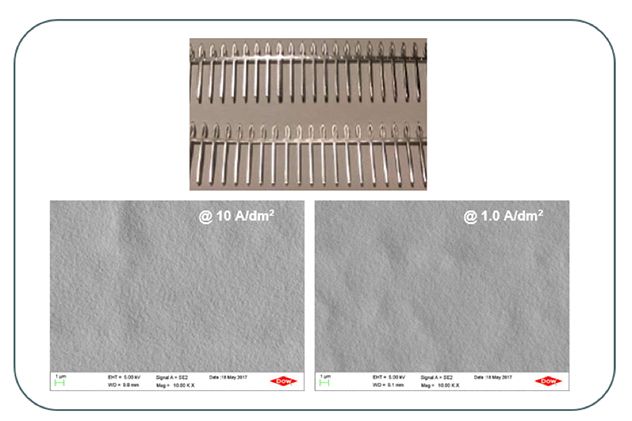
Figure 2: A semi-bright Silveron™ GT-820 AgSn layer over Ni obtained by reel-to-reel plating (top); SEM images show a uniform fine-grained deposit over a broad CD range (bottom).
Indiplate™ APF Indium
Dow’s second product for compliant-pin surface finishes is Dow’s Indiplate APF, a pure-indium surface finish. Although indium is not a well-known connector finish, this electroplated indium is well-suited to press-fit solutions because it is soft and lubricating, which enables low insertion forces, while rapidly forming an excellent cold-welded interface with commonly used final finishes on PCB.
Tests on several press-fit connector designs using the new Indium finish demonstrated higher retention forces compared to standard tin-lead or matte-tin finishes, which is an important advantage. Indium is not an element that is absolutely free of whisker growth by nature; however, comparative whisker tests under automotive press-fit conditions show that the whisker-growth propensity of the new indium finish is lower than that of matte-tin finishes.
The indium electroplating bath contains additives that are essential to produce a uniform, satin white deposit at standard plating speeds for reel-to-reel selective plating. Similar to Silveron GT-820 AgSn plating, when plating indium over a nickel preplated layer, a strike solution is recommended to ensure excellent adhesion between indium and nickel layers (see Figure 3).
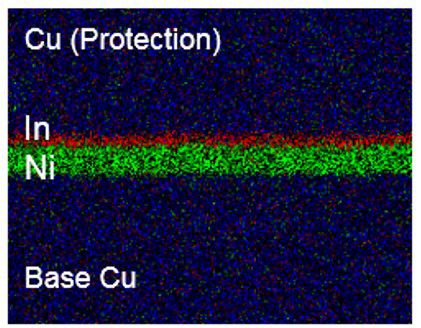
Figure 3: Good adhesion of Indiplate™ APF Indium over Ni demonstrated by EDX Mapping.
As the automotive industry is proactively moving away from lead-containing finishes on PCBs and press-fit connectors, Dow offers multiple reliable, nontoxic electroplating chemistries that comply with RoHS restrictions while minimizing the risk due to whisker growth.
Related Information
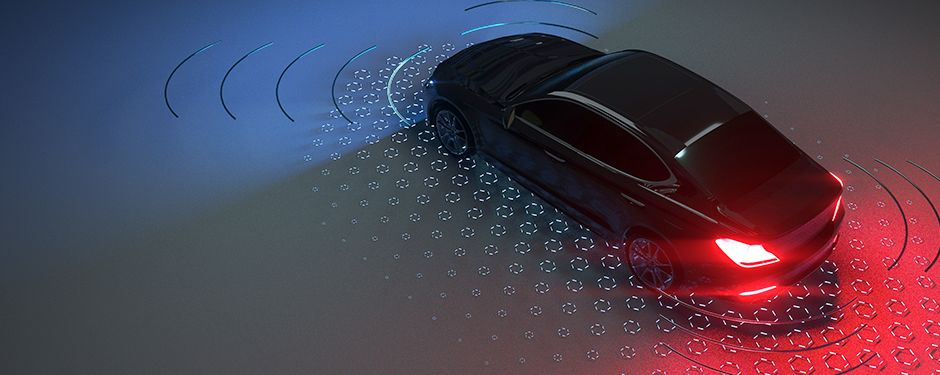
The growing size and complexity of the automotive PCB market makes it a great opportunity for PCB suppliers.

The POP process incorporating our novel CFE is in mass production, demonstrating that eliminating hexavalent chromium etchant is feasible
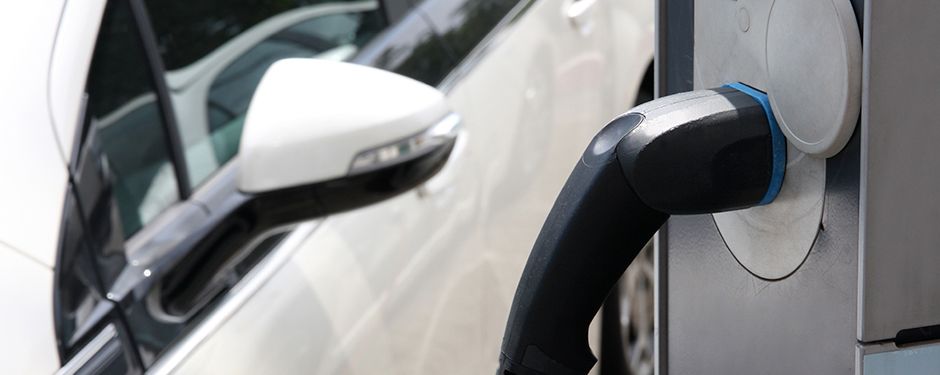
How we overcame technical challenges to develop a flexible, high-performance automotive solution.
We’re here to help.
We love to talk about how our electronics solutions can build business, commercialize products,
and solve the challenges of our time.